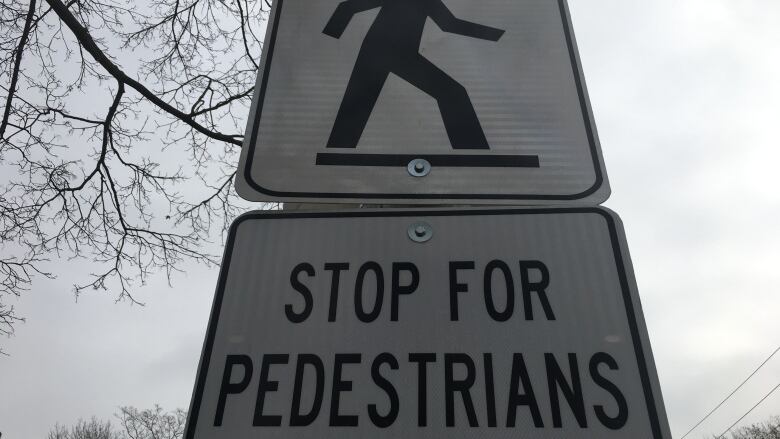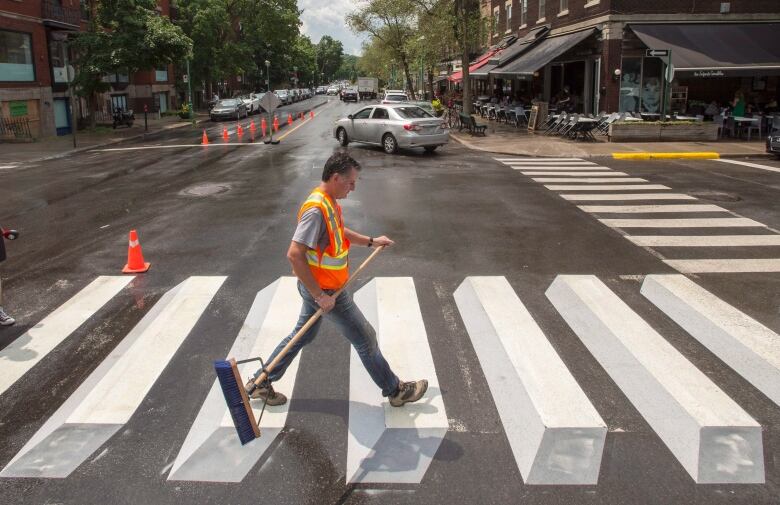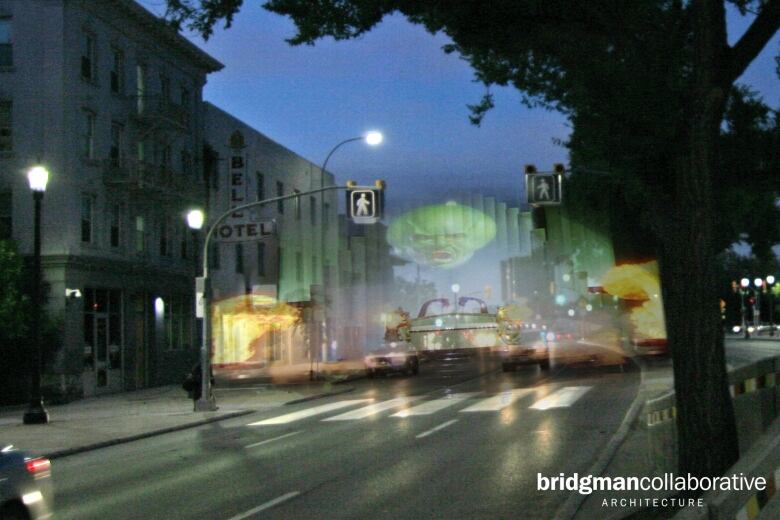Planners call for safety overhaul of Winnipeg crosswalks
Opinion: time to design our crosswalks for "human error" say architect and planner

It takes a lot of courage to cross the street as a pedestrian, even if you're crossing "safely" at a controlled intersection.
And crosswalks well, they can be even more treacherous, as in, "Is that car going to stop? Yesno yikes, it's zooming past!"
So what's a pedestrian to do in this dance with death? It's not as if drivers actually want to mow a pedestrian down, right?
We've witnessed drivers wait patiently as a person with mobility issues struggles to cross a street in Winnipeg. But we've also witnessed drivers ignore crosswalk signals, drive distractedor fail tostop long enough to ensure pedestrians have reached the other side.
And yes, we've also seen crosswalk users blithely stepout from the curb without looking both ways.
The odds are mightily stacked against vulnerable pedestrians
Clearlyit's time to design crosswalks for human error.
Our urban streets are designed by traffic engineers to enhance traffic flow and reduce congestion. Our crosswalks are designed to help pedestrians enjoy their walkable city.
And therein lies the (potentially life-threatening)tension.
The odds are still mightily stacked against vulnerable pedestrians. There are so many cars andtoo many drivers in a hurry.Crosswalk signals fail, streets are too wide, winter roads are slippery.
As of the beginning of August, nine pedestrians and one cyclist have been killed in Winnipeg in motor vehicle collisions this year.
That's 10too many.
In the last weekend of September, another four pedestrians were injured in motor vehicle collisions.
So how can we heighten safety for pedestrians?
Crosswalks and intersections can feature special signage, flashing lights, paving stones, raised crossings, arresting pavement graphics (as well as pavement art), pedestrian head starts (pedestrian-only walk time before a signal changes for vehicle traffic), and pedestrian scrambles (all traffic stops and pedestrians cross an intersection in any direction, including diagonally).
The last, the pedestrian scramble, is currently being tested out in Edmonton and is being explored by the City of Winnipeg.

But here are a few more ideas for Winnipeg to keep the ball rolling:
Narrow roadway
We believe no crosswalk should exist over five lanes of traffic and then another four, in a high-traffic area. Nine lanes downtown!
We're thinking of the crosswalk just north of the underpass at Main and Higgins, in a busy mixed-use residential and commercial area.Such a crosswalk represents skewed interests skewed in favour of cars.
Slow down!
Drivers slow down in school zones and there are warning signs. Why not do the same in crosswalk zones? Pedestrians have a greater chance of survival when cars drive more slowly and come to complete stops.

Recognize that not every pedestrian takes the same time to cross the street. What about using different crosswalk activation buttons one button for people walking, one button for someone experiencing mobility issues, one for a cyclist?

Crosswalks are supposed to be for everyone, so it's time to add more body types to the "walking man" icon on crosswalks.
The power of red
We support removing the colour amber from crosswalks.
Amber's message is supposed to be "proceed with caution," but for many drivers, amber appears to mean speed up and get through the light.
Red, however, indicates STOP. Why not make the colour of the lights at pedestrian crosswalks red?
Even better, the colours green, amber and red work for traffic lights at intersections, right?
So why not have pedestrian crosswalk LED lights use these same colours?
The crosswalk glows green when not in use, amber when the crosswalk is activated, and red indicates all vehicles must stop.
Equalize fines for transgressions at controlled intersections and crosswalks. Traffic light cameras capture the moment when a driver runs a red light. Go through a red light and you have a ticket.
Use camera technology at crosswalks, too.
Public art
Here's a definite attention-grabber: How about creating a crosswalk spectacle?
What about a three-dimensional virtual hologram?

Then there's this idea.
This crosswalkembraces the poetry of mathematics and the beauty of physics.
Partly inspired by the work of Ivo Schoofs, a light artist from the Netherlands, and his Large Pendulum Wave, we incorporate Newton's cradle into the design of a crosswalk.

It works like this.
Large balls hang above the crosswalk. The movement (swing) of the first ball is activated by the crosswalk button, along with lights and sound.
The energy like the pedestrian crosses the street, releasing the last ball on the other side of the street into motion. The motion reverses until all pedestrians safely cross the street.
Vision Zero
Winnipeg's road safety improvement efforts have been following Canada's road safety strategy Towards Zero: The Safest Roads in the World since 2017.
It's a strategy based on Sweden's proactive Vision Zerostrategy, which they adopted more than two decades ago.
The aim of Vision Zero is simple: a road transportation system with no traffic fatalities or severe injuries.
Canada's Towards Zero document is also aspirational, but it sets no goals and no timelines.
Walk the walkand the numbers talk
Let's up the ante and join the Vision Zero campaign that so many other cities around the world have already endorsed. Sweden now has the lowest rate of traffic fatalities in the world.
Edmonton, Ottawa, Vancouver, Toronto, Hamilton and Surrey, B.C., are actively, if not aggressively, pursuing Vision Zero initiatives.
Edmonton's serious injuries have been reduced and the number of traffic fatalities has gone down over the last three years.
Walk the walk and the numbers talk.
Here's to safe, healthy, equitable mobility for everyone (including pedestrians and cyclists), and not just those behind the wheel of a car or truck.
What's stopping us?
This column is part ofCBC's Opinion section.For more information about this section, please read thiseditor's blogand ourFAQ.












_(720p).jpg)


 OFFICIAL HD MUSIC VIDEO.jpg)
.jpg)



























































































